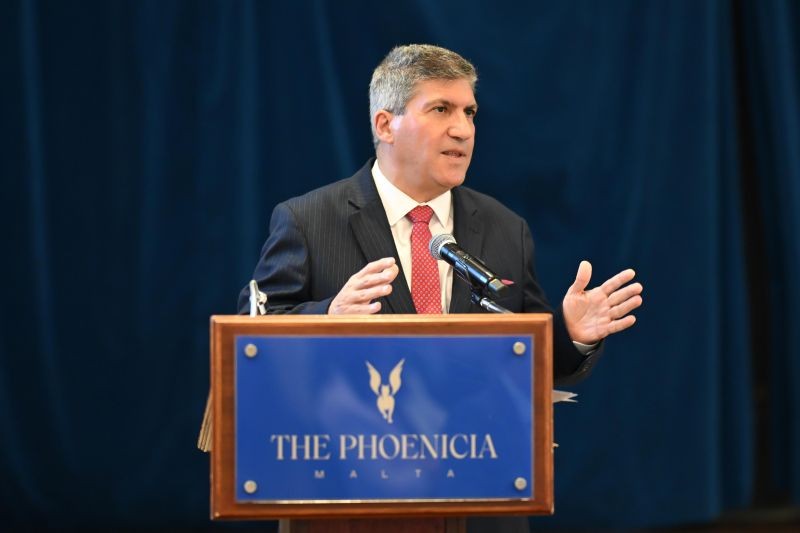Like you, most likely, I read through the papers over the weekend. I flipped through a few magazines and scrolled through social media. Over those two days, I absorbed over 500 promises made to me through marketing messages and advertisements.
Imagine how many promises are being made globally every day to billions of people through many forms of communication in many, many languages. With every promise comes an expectation, and with every expectation comes an opportunity to exceed, meet or disappoint based on that expectation.
We all know that promises are meant to be kept. However, too often I read words that indicate a promise of efficient service, quality, luxurious appointments, or of personal and bespoke experiences, and I really wonder how many of these are truly being delivered.
How many billions of dollars are being spent making well wished promises to potential customers? Based on the number of promises that have been broken during international trips from my Malta base over the years, I believe the cost of broken promises are substantial.
What is tragic for businesses is how directly these broken promises translate into lost opportunities. There is a real sense that the opportunity to cultivate a feeling of trust between company and customer is lost.

Employees are not to blame here. Many times, the employee tries their best to do the right thing. What is missing is the employee’s understanding of the promise made to the customer, and in how it is being expected to be delivered.
Leaders must never take for granted or make assumptions that others know exactly what they are talking about when you ask something of a team member. This is especially true when it relates to delivering on a promise made.
In the hospitality industry, this is crucial. The importance of creating a solid framework, an aligned understanding, training, and development cannot be understated. It’s important that employees know what the company’s brand promise is, and what it ‘feels’ like to deliver on these very important promises made to customers.
Realising a brand vision
When developing a brand vision and establishing what you would like to become renowned for, I urge you to carefully consider how this vision will be brought to life by your people. How does the human touch impact the final reality? Consider the opportunity and what is needed to firmly establish and live the promise within your organisation. If not, you risk creating a disconnect between your internal culture and the face of your brand.
When your brand promise doesn’t live up to your audience’s expectations, you won’t just disappoint, you’ll lose trust. Business will be lost. In the worst case, customers will tell friends and family of their negative experience as well.
How is this avoided?
For one thing, it is critical to give training and ongoing reinforcement on brand promises to your team. This means ALL employees. Being aware of the brand promise is not enough. Team members must appreciate and value the importance and meaning behind it. They need to understand their role in delivering on this promise. It is important that they know what is expected of them and for them to be equipped with the tools necessary to do exactly that. The bottom line? Translate your brand – your promise, your values and your vision – into a clear set of expected behaviours for your people.
Consider the challenges faced by international brands. These steps are just the tip of the iceberg! What has become clear to me is that many brands with a global presence are failing to appreciate the differences between cultures. They blunder in understanding how this impacts the way their brand promise is delivered. We see brands examining the difference between cultures and how this externally impacts the way their message is delivered or perceived. But in many cases, businesses sidestep how differences in culture internally, amongst their own team members, impact the way the brand promise is expressed. This is a mortal mistake.
The corporate culture you’ve been cultivating might be successful today. It doesn’t guarantee it’s success will extend as your company grows over time. Generational differences, diversity and cross-cultural differences all have an impact on how your brand ‘feels’ at different customer touchpoints.
To ensure that your brand promise translates to success, assess your internal culture along with your brand and strategy periodically. Be prepared to modify when it’s the best for your brand message. Continually communicate with and train your team to ensure they know their role in bringing the brand to life every day. Make 110 per cent sure they feel confident in taking on their role in delivering your promise at each and every touch point to both colleagues and guests.
Your return? Loyal employees and guests, which leads to success for all!
6 morning routine mistakes to avoid that could cost you productivity
There are easy and effective ways to set the right tone from the start of your day.
Mistakes CEOs regret and how to avoid them
Many CEOs look back and wish they had done things differently.
6 steps business leaders must follow to address negative online reviews
Responding to online critics is an effective way of protecting a company’s reputation and building customer loyalty.
Provide feedback and show respect: 5 ways business leaders can steer a young team towards success
Millennials and Gen Z employees are on the rise, and while they are wrongly viewed as ‘unmotivated’ and ‘entitled’, they ...









